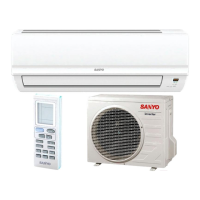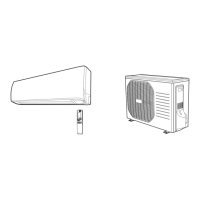TECHNICAL & SERVICE MANUAL
SAP-KRV96EH + SAP-CRV96EH
SAP-KRV126EH + SAP-CRV126EH
DC INVERTER SPLIT SYSTEM AIR CONDITIONER
Indoor Model No.
SAP-KRV96EH
SAP-KRV126EH
Product Code No.
1 852 346 74
1 852 346 75
FILE NO.
Outdoor Model No.
SAP-CRV96EH
SAP-CRV126EH
Product Code No.
1 852 346 81
1 852 346 82
REFERENCE NO. SM700728
Destination: Europe
A
I
R
C
O
N
DITIONER
Indoor Unit Outdoor Unit
SAP-KRV96EH
SAP-KRV126EH
SAP-CRV96EH
SAP-CRV126EH
RoHS
WARNING
• This product does not contain any hazardous substances prohibited by the RoHS Directive.
Compliance with regulation 842/EC/2006, Article 7(1) requirements
Do not vent R410A into the atmosphere:
R410A is a fluorinated greenhouse gas, covered by the Kyoto Protocol,
with a global warming potential (GWP) = 1975.
• You are requested to use RoHS compliant parts for maintenance or repair.
• You are requested to use lead-free solder.



